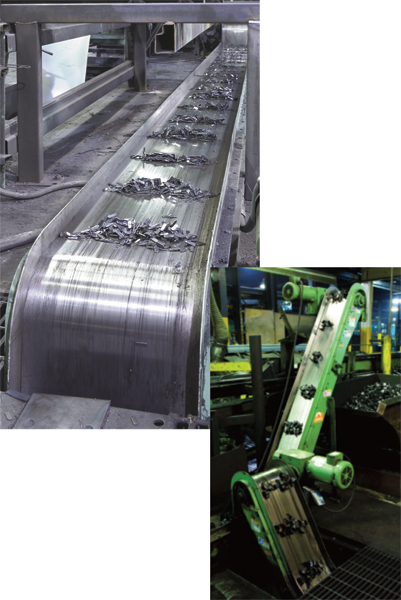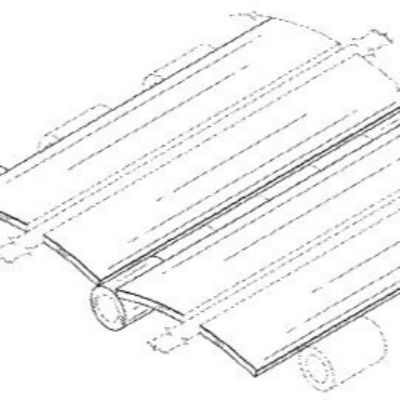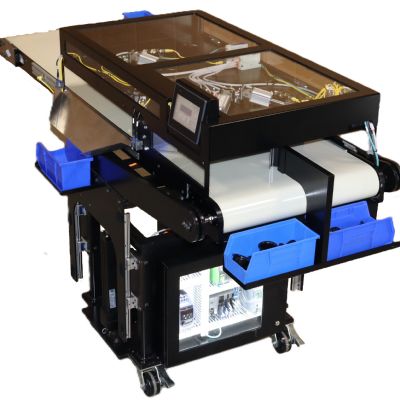Tiny Slugs No Longer Inducing Conveying Headaches
June 1, 2012Comments
Faced with mounting rollforming-line downtime and nagging conveyor jams, a manufacturer of storage racks finds safe haven by investing in magnetic conveyors whose drive chain rides on oil-impregnated UHMW track.
Processing more than 50,000 tons of rollformed storage racks per year requires a network of magnetic conveyors to keep sheetmetal slugs—or punch-outs—moving throughout the facility and into scrap bins for salvaging.
That’s the scenario at Ridg-U-Rak, North East, PA, which expanded its manufacturing plant in 2007 to the tune of $6 million. As a result of the expansion, the plant, which manufactures storage racks used in a variety of industrial, retail and general warehousing applications, upgraded one of its rollforming production lines with a new 200-ton Minster stamping press and a hydraulic cutoff press. It also added a press brake, a new 10-ton coil-handling crane, a 1200-ft. powder-coating line and four new magnetic conveyors. The plant’s rollforming lines include coil feeders and levelers, automatic welders, pre-forming stamping presses (hydraulic and mechanical), rolling mills, line welders, pull-out mills and cutoff press.
Creating the vertical- and horizontal-shaped units that ultimately form a storage-rack system starts with coils of black or galvanized steel, measuring up to 18 in. wide and weighing as much as 20,000 lb., according to plant engineering manager Jim Gunter. Once the coils are offloaded, they are placed on one of nine rollforming lines where the steel is fabricated into a series of beams and columns.
Capturing Metal Slugs for Salvaging
After the coiled steel is placed on a rollform line, the material is flattened and fed into a hydraulic or mechanical press, where holes are punched into the strip before it feeds through the rollforming stations. Proving particularly challenging to the operation: Conveying the small quarter-sized slugs a from each line to a central under-the-floor conveying line and outdoors to salvage bins.
“We used to use steel belt conveyors with welded tabs on the links,” says Gunter, “and the small slugs being transported on the exterior moving links would constantly slide out of position and jam the conveyor track. That problem went a when we switched to conveyors using permanent ceramic magnets inside a liquid-tight housing.”
Now, all scrap emanating from hydraulic presses falls onto magnetic conveyors; mechanical presses deposit scrap onto vibratory conveyors, which then moves onto a magnetic conveyor.









